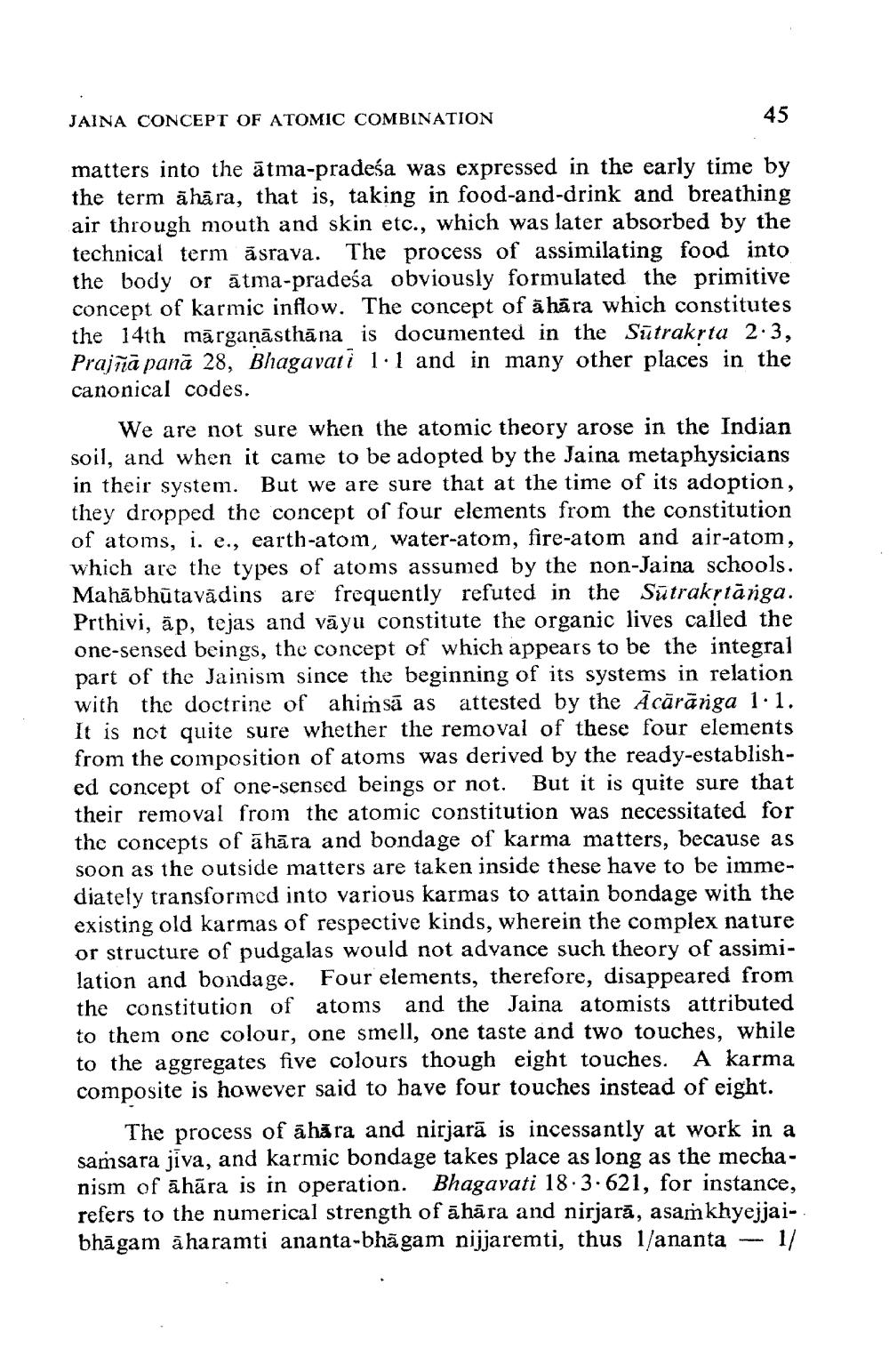________________
JAINA CONCEPT OF ATOMIC COMBINATION
matters into the ātma-pradeśa was expressed in the early time by the term āhāra, that is, taking in food-and-drink and breathing air through mouth and skin etc., which was later absorbed by the technical term asrava. The process of assimilating food into the body or ātma-pradeśa obviously formulated the primitive concept of karmic inflow. The concept of āhāra which constitutes the 14th mārgaņāsthāna is documented in the Sūtrakrta 2.3, Prajñā panā 28, Bhagavati 1:1 and in many other places in the canonical codes.
We are not sure when the atomic theory arose in the Indian soil, and when it came to be adopted by the Jaina metaphysicians in their system. But we are sure that at the time of its adoption, they dropped the concept of four elements from the constitution of atoms, i. e., earth-atom, water-atom, fire-atom and air-atom, which are the types of atoms assumed by the non-Jaina schools. Mahābhūtavādins are frequently refuted in the Sūtrakrtānga. Prthivi, āp, tejas and vāyu constitute the organic lives called the one-sensed beings, the concept of which appears to be the integral part of the Jainism since the beginning of its systems in relation with the doctrine of ahiṁsā as attested by the Acāränga 1:1. It is not quite sure whether the removal of these four elements from the composition of atoms was derived by the ready-established concept of one-sensed beings or not. But it is quite sure that their removal from the atomic constitution was necessitated for the concepts of āhāra and bondage of karma matters, because as soon as the outside matters are taken inside these have to be immediately transformed into various karmas to attain bondage with the existing old karmas of respective kinds, wherein the complex nature or structure of pudgalas would not advance such theory of assimilation and bondage, Four elements, therefore, disappeared from the constitution of atoms and the Jaina atomists attributed to them one colour, one smell, one taste and two touches, while to the aggregates five colours though eight touches. A karma composite is however said to have four touches instead of eight.
The process of āhāra and nirjarā is incessantly at work in a samsara jiva, and karmic bondage takes place as long as the mechanism of āhāra is in operation. Bhagavati 18.3.621, for instance, refers to the numerical strength of āhāra and nirjarā, asamkhyejjaibhāgam āharamti ananta-bhāgam nijjaremti, thus 1/ananta – 11




